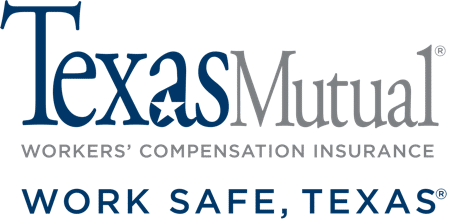What CEOs Need to Know About Building a Positive Safety Culture

Good CEOs spend a lot of time thinking about their company’s culture—the shared values and norms that guide people at work. Culture affects everything your team members do, including how they keep themselves and each other safe on the job.
Why is it so critical to have a positive safety culture at your organization? Because it can lead to:
- Lower workers’ compensation costs
- Lower insurance premiums
- Increased employee retention
- A more engaged workforce
- Better recruiting
- Fewer lost work days
- No OSHA fines or smaller chance of hearing from OSHA
What exactly is a safety culture?
A safety culture is the way safety is perceived, valued, prioritized, and integrated in all activities in the workplace. It reflects the commitment to safety at all levels.
Your employees’ perception of your company’s safety culture is influenced by:
- actions, or lack thereof, toward correcting unsafe behavior,
- employee training and motivation, and
- management and employee attitudes.
Put simply, a safety culture is a set of core values and behaviors that emphasize safety as an overriding priority. If a company has a positive safety culture, then it is more likely to have a good safety record. A safety culture stems from more than just a safety program, though.
There’s a common misconception that if you have a safety program in place, then your safety culture is in check, but that’s not always the case. A safety program is a plan that outlines how the company will address hazard prevention and control. But a safety culture is a safety-first commitment that influences all actions at a company.
Five Stages of a Safety Culture
As the CEO and leadership build a commitment to safety, the safety culture typically goes through five stages: emerging, reactive, analytical, proactive, and cultural. As you read about each stage, ask yourself: Where does our company currently stand?
1. Emerging: “We don’t care as long as we aren’t caught.”
In the emerging stage, safety is focused on technical and procedural solutions to comply with regulations. Safety is not seen as a key business risk. The safety department, if it exists, is perceived as primarily responsible for compliance, not as a resource for the whole workforce. Many accidents are seen as unavoidable, and most employees, including management, are not interested in safety and don’t see its value.
2. Reactive: “Safety is important; we do a lot every time we have an accident.”
In the reactive stage, safety is seen as a business risk. Management time and effort are devoted to accident prevention. Attention to hazards is directly related to incidents after they occur. Like the emerging stage, the focus is on adherence with rules, procedures, and engineering controls, not worker behavior. Accidents are seen as preventable, and management believes the majority of accidents can be attributed to workers’ unsafe behavior.
Safety performance is measured with lagging indicators, which are past performance statistics such as injury rates, and safety incentives are based on reducing lost-time incidents. Management becomes involved in health and safety only if accidents increase. In this stage, employees may be disciplined for unsafe behavior. Accident rates are near the industry average.
3. Analytical: “We have systems in place to manage all hazards.”
In this stage, accident rates are low and may have reached a plateau. Management recognizes that employee involvement is essential for safety improvement, and management has buy-in from employees to reduce safety hazards. Workplace accidents are understood to be a result of many factors rather than one worker’s actions. Safety performance is actively monitored. Data is used to prevent future incidents.
4. Proactive: “Safety leadership and values drive our continuous improvement.”
The majority of staff is convinced that health and safety is important. Management knows that a wide range of factors lead to accidents and devote resources to analyze root causes. Management puts significant effort into proactive measures to prevent accidents, and safety performance is actively monitored using all data available. The company promotes a healthy lifestyle, and non-work accidents are also monitored.
5. Cultural: “Safety is how we do everything around here.
When a company reaches this level of safety culture, safety is a top priority. The company has sustained a significant period without a recordable accident or high-potential incident, but there is no feeling of complacency. There is a wide range of indicators to monitor performance, but it is not performance driven. All employees are actively involved in the safety program and share the belief that health and safety is a critical aspect of their job. There is also group acceptance that prevention of all injuries, including non-work injuries, is important. The company invests considerable effort in promoting health and safety at work and at home.
• • •
No matter where your company stands currently, a positive safety culture isn’t built overnight. It’s something an organization has to develop and maintain. It takes time and commitment from management. But once it’s in place, your employees, leadership team, board, shareholders, and customers will all rest assured that safety is a priority at all levels, influencing the moment-to-moment decisions each team member makes.

Caring for Texas for more than 25 years
As the leader of the workers’ compensation market, Texas Mutual is committed to building a stronger, safer Texas. We offer workers’ compensation insurance that protects employers, their businesses, and their employees from the consequences of an on-the job injury or illness. Don’t “go bare”—protect your employees and business with the company who does workers’ compensation bigger and better than anyone else. Whether you work in oil and gas, restaurants, construction, healthcare, auto repair, or any other industry, we’re here to help.
- 70,000+ businesses insured by Texas Mutual
- 8,962 agents across the state, ready to serve you
- 400 self-paced interactive safety courses available to policyholders and their employees



